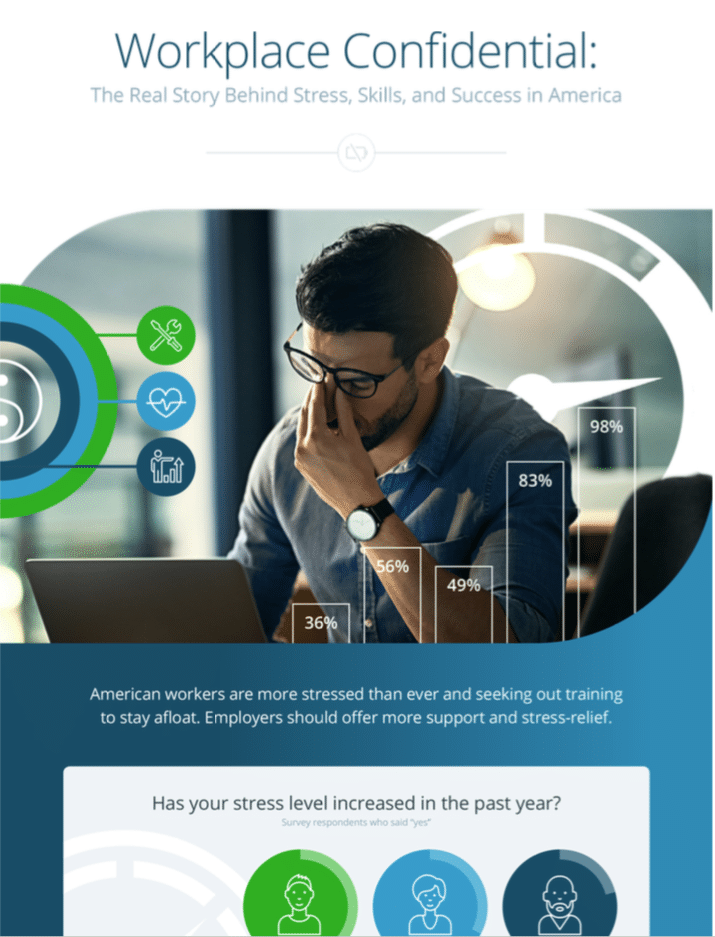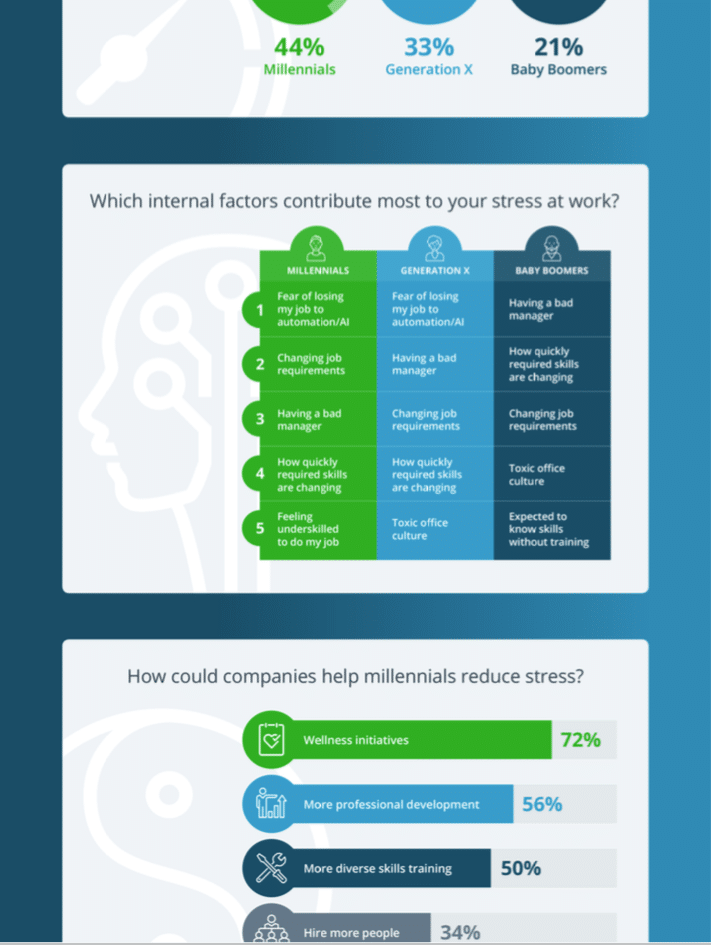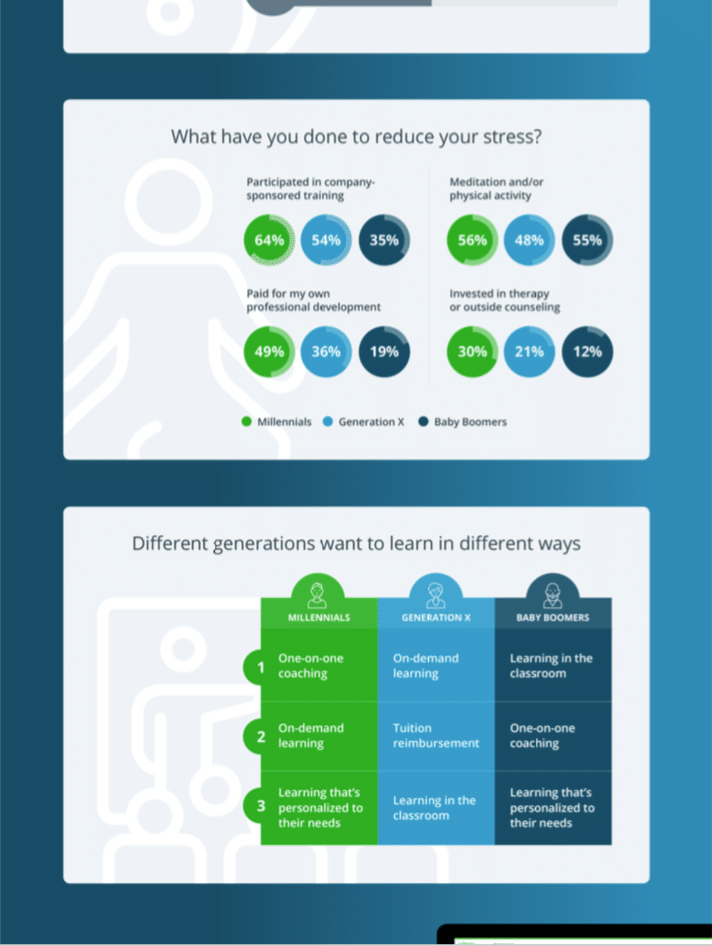Workplace stress is increasing, and American workers are actively addressing it by learning new skills, according to a recently released report from online learning marketplace Udemy.
The report, Workplace Confidential: The Real Story Behind Stress, Skills, and Success in America, found more than half (52 percent) of full-time employees in America feel more stressed today than they did one year ago. Additionally, 58 percent turn to company-sponsored skills training to combat this epidemic.
“Workplace stress has reached unprecedented levels in America, with a unique confluence of internal and external triggers—from a volatile political climate to the rise of artificial intelligence in the workplace. At the same time, the skills required to do our jobs change about every three months, and pressure to adapt is relentless. This study shows that workers are responding to stress with a new self-driven approach centered around learning and growth,” said Darren Shimkus, vice president and general manager for Udemy for Business, a curated learning platform that helps enterprises continuously upskill their workforce and foster a culture of learning, in a news release.
New stressors impact the workforce
Nearly two-thirds (60 percent) of U.S. workers are stressed all or most of the time at work because of the following elements:
- No. 1 stress trigger outside of work: The current political climate (50 percent)
- No. 1 stress trigger inside work: Fear of losing jobs to artificial intelligence or new technology (43 percent)
Other top-ranking stressors include the pressure to master new skills quickly to keep up with changing job responsibilities (52 percent) and feeling under-skilled for the job (42 percent). Generationally, millennials and Gen Z are the most stressed at work today, with 64 percent feeling stressed all or most of the time at work.
Employees proactively learn new skills to combat workplace stress
American workers are looking to acquire new skills on their own time or through company-sponsored programs to de-stress and position themselves for long-term success. A significant segment (42 percent) have even invested their own money in professional development. Workers say the No. 1 form of stress relief they use today is company-provided training and professional development programs (58 percent), followed by meditation and/or physical activity (54 percent).
- 57 percent ranked opportunities to learn and grow as one of the most important aspects of workplace culture.
- 54 percent of millennials and Gen Z employees prioritized more personalized, one-on-one coaching as their preferred form of learning.
- 48 percent think investing more in professional development is one of the most impactful things their company can do to alleviate stress.
- 47 percent say they would like to see their company provide on-demand learning opportunities.
“Employees are getting in the driver’s seat of their training and careers to combat stress and find professional success,” said Shimkus. “Businesses have a significant opportunity to not only help reduce workplace stress but also improve productivity and business outcomes by adopting an employee-driven approach to learning and professional development.”
Download the complete report here.




This online survey was conducted by Toluna Group on behalf of Udemy in April 2017 among 1,000+ U.S. office workers in full-time jobs who are ages 18 or older. Complete survey methodology available upon request.



